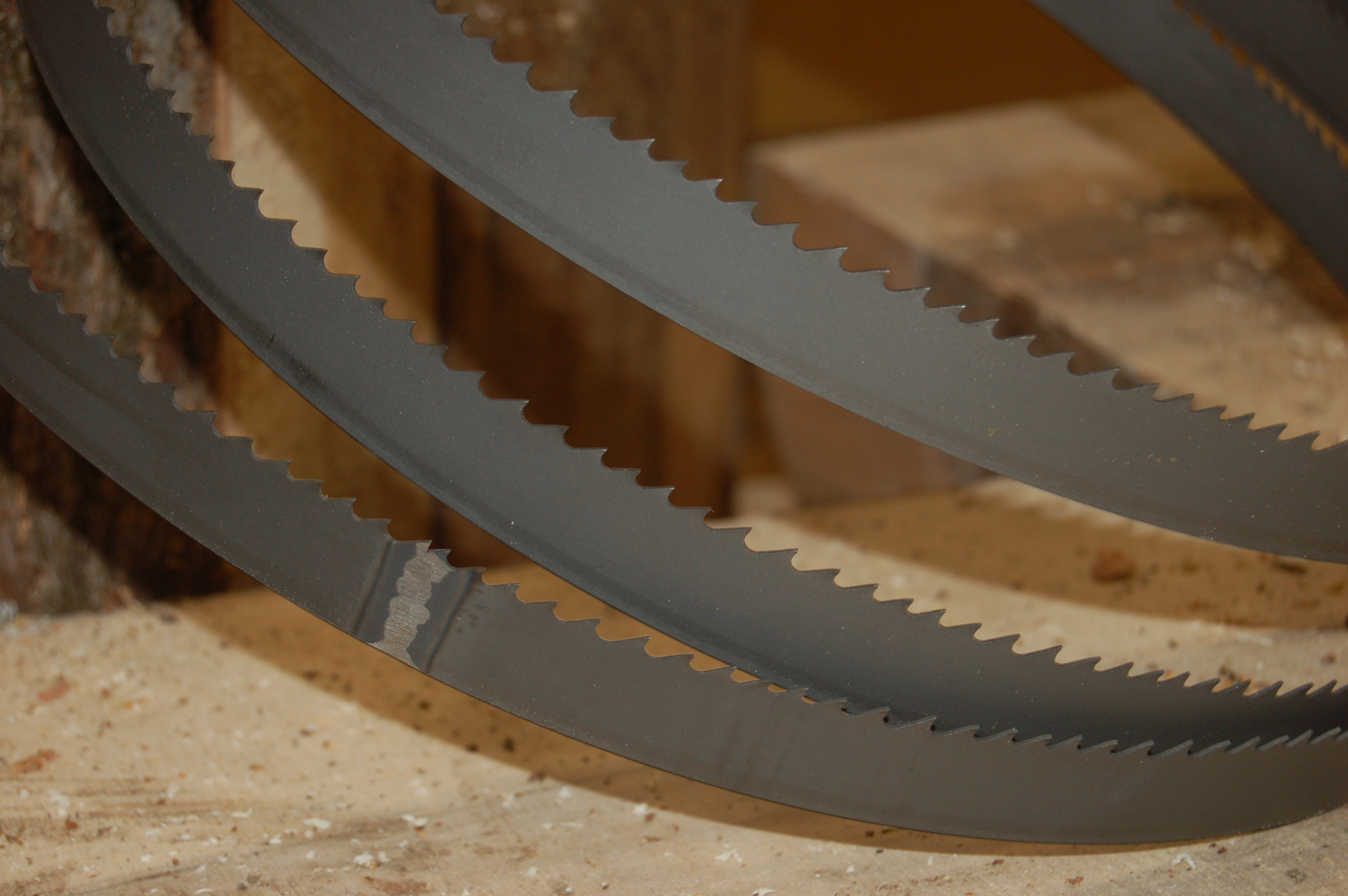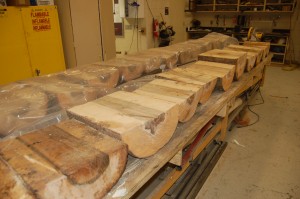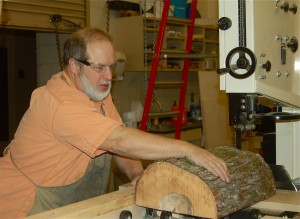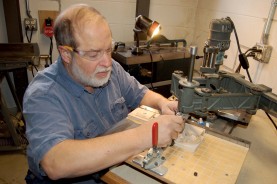Cutting Maple the Historical Way (4)

 I had everything ready to cut half maple slabs. The industrial 4 tooth bandsaw blade was set to the correct tension, the fence was 1 1/4” from a right side pointing tooth The real woodworkers will understand what I mean, the rest of you need to understand that the teeth on a bandsaw blade are slightly bent left-right-left-right and leave a kerf, or width of cut. This is called “Set” and the factory alternates all 600 teeth.
I had everything ready to cut half maple slabs. The industrial 4 tooth bandsaw blade was set to the correct tension, the fence was 1 1/4” from a right side pointing tooth The real woodworkers will understand what I mean, the rest of you need to understand that the teeth on a bandsaw blade are slightly bent left-right-left-right and leave a kerf, or width of cut. This is called “Set” and the factory alternates all 600 teeth.
I hoisted a frozen maple half log onto my home-made carriage saw. Safety glasses of course, I’m an Industrial Arts teacher. The first cut was wonderful. Straight through the log, and I could feed it at a slow but steady rate. It was kind of like working outside in the snow, the white sawdust coming off the log was still frozen and very cold. Yea! It was going to work. One cut down, only 400 more to go.
The second cut was almost the same, just a little harder to keep the cut straight and the cut end against the fence. The third cut wandered all over the place. When you are hand feeding a nine inch thick half-log past a big moving blade, I started to wonder what was going on. I shut everything down and decided to figure it out before I wasted any more wood or hurt myself.
From 35 years of woodworking, I know how to troubleshoot a problem. I started with the carriage saw, it worked smooth and ran straight. I rechecked the fence for square and a 1 1/4” cut. Not there either. That left the blade. It was still very sharp, and the tension was still correct. Then I saw the problem. There was no set left in the saw teeth. The teeth were in a perfectly straight line, no more left-right-left-right. The frozen maple had straightened out the blade after only 3 cuts. I was very sad. I cleaned-up the shop and went home to figure out what to do. I had a huge pile of frozen maple logs outside under a tarp and 60 degree weather coming in 5 days.



